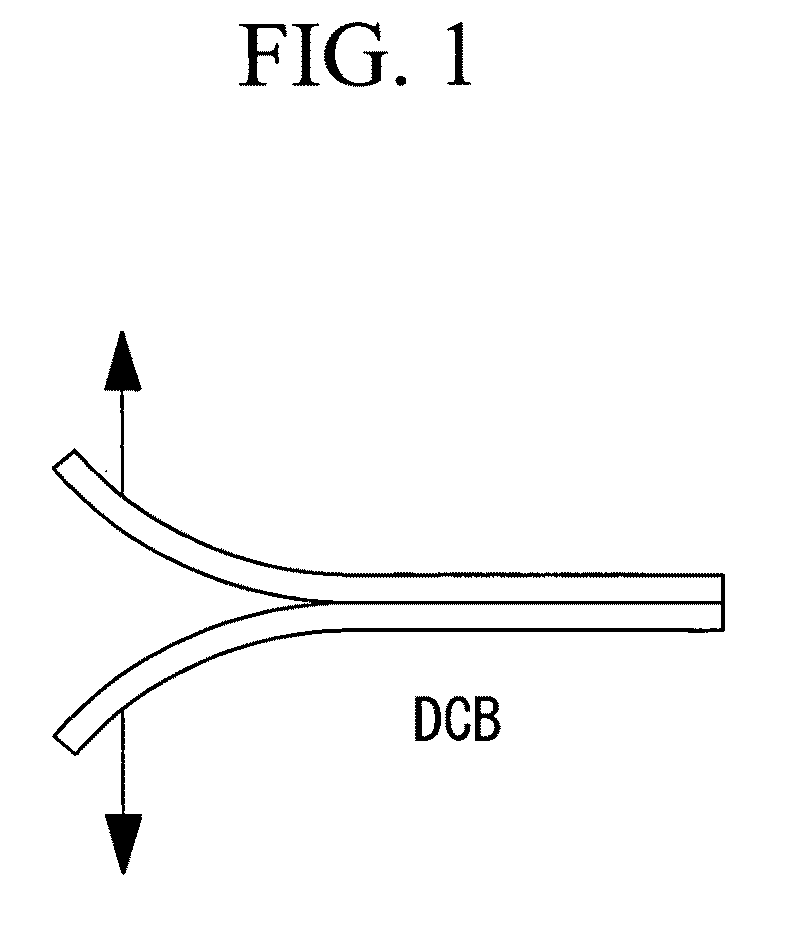Process for Pretreating Formed Article, Bonded Article and Process for Producing Same, and Coated Article and Process for Producing Same
a technology of bonded articles and coated articles, applied in the direction of coatings, chemistry apparatus and processes, manufacturing tools, etc., can solve the problems affecting the adhesion of formed articles, and affecting the adhesion of the formed articles. , to achieve the effect of reducing the strength of composite materials
- Summary
- Abstract
- Description
- Claims
- Application Information
AI Technical Summary
Benefits of technology
Problems solved by technology
Method used
Image
Examples
example 1
[0049]Two CFRP samples similar to those used in the comparative example 1, in which one surface had been pretreated by shot blasting under the conditions described below, were used as test pieces.
[0050]Projection material: ceramic spherical particles (alumina, silica), #400 (average particle size: not more than 50 μm)
[0051]Blast pressure: 0.5 MPa
[0052]Coverage: 100%
[0053]The same epoxy-based adhesive as that used in the comparative example 1 was applied to the shot blasted surface of each of the test pieces so as to cover approximately 300 mm from one end of the test piece, and the adhesive-coated surfaces were then bonded together in the same manner as the comparative example 1. An interlayer fracture toughness test was then performed by the DCB method in the same manner as the comparative example 1, and the toughness value was measured. The same test was performed 5 times. The average value of the measured toughness values is shown in Table 1.
TABLE 1Toughness (MPa · cm)Comparative...
example 2
[0059]Two CFRP samples similar to those used in the comparative example 3, in which one surface had been pretreated by shot blasting under the conditions described below, were used as test pieces.
[0060]Projection material: amorphous silicon carbide particles,
[0061]Blast pressure: 0.5 MPa
[0062]Coverage: 100%
[0063]The same epoxy-based adhesive as that used in the comparative example 3 was applied to the test pieces, and the adhesive-coated surfaces were then bonded together in the same manner as the comparative example 3. A compressive interlayer shear test was then performed in the same manner as the comparative example 3, and the shear strength value was measured. The obtained shear strength value is shown in Table 2.
TABLE 2Strength (MPa)Comparative example 325.3Comparative example 435.0Example 241.0
[0064]In the above compressive interlayer shear tests, as was the case above, it is evident that the test pieces that had undergone shot blasting in accordance with the present invention...
example 3
[0070]A CFRP sample similar to that used in the comparative example 5, in which one surface had been pretreated by shot blasting under the conditions described below, was used as a test piece.
[0071]Projection material: ceramic spherical particles (alumina, silica), #400 (average particle size: not more than 50 μm)
[0072]Blast pressure: 0.5 MPa
[0073]Coverage: 100%
[0074]The same primer as that used in the comparative example 5 was applied to the shot blasted surface of the test piece by spraying, and a coating film adhesion test was performed in the same manner as the comparative example 5.
[0075]The result of the coating film adhesion evaluation test is shown in Table 3.
PUM
| Property | Measurement | Unit |
|---|---|---|
| particle size | aaaaa | aaaaa |
| particle size | aaaaa | aaaaa |
| particle size | aaaaa | aaaaa |
Abstract
Description
Claims
Application Information
 Login to View More
Login to View More - R&D
- Intellectual Property
- Life Sciences
- Materials
- Tech Scout
- Unparalleled Data Quality
- Higher Quality Content
- 60% Fewer Hallucinations
Browse by: Latest US Patents, China's latest patents, Technical Efficacy Thesaurus, Application Domain, Technology Topic, Popular Technical Reports.
© 2025 PatSnap. All rights reserved.Legal|Privacy policy|Modern Slavery Act Transparency Statement|Sitemap|About US| Contact US: help@patsnap.com



